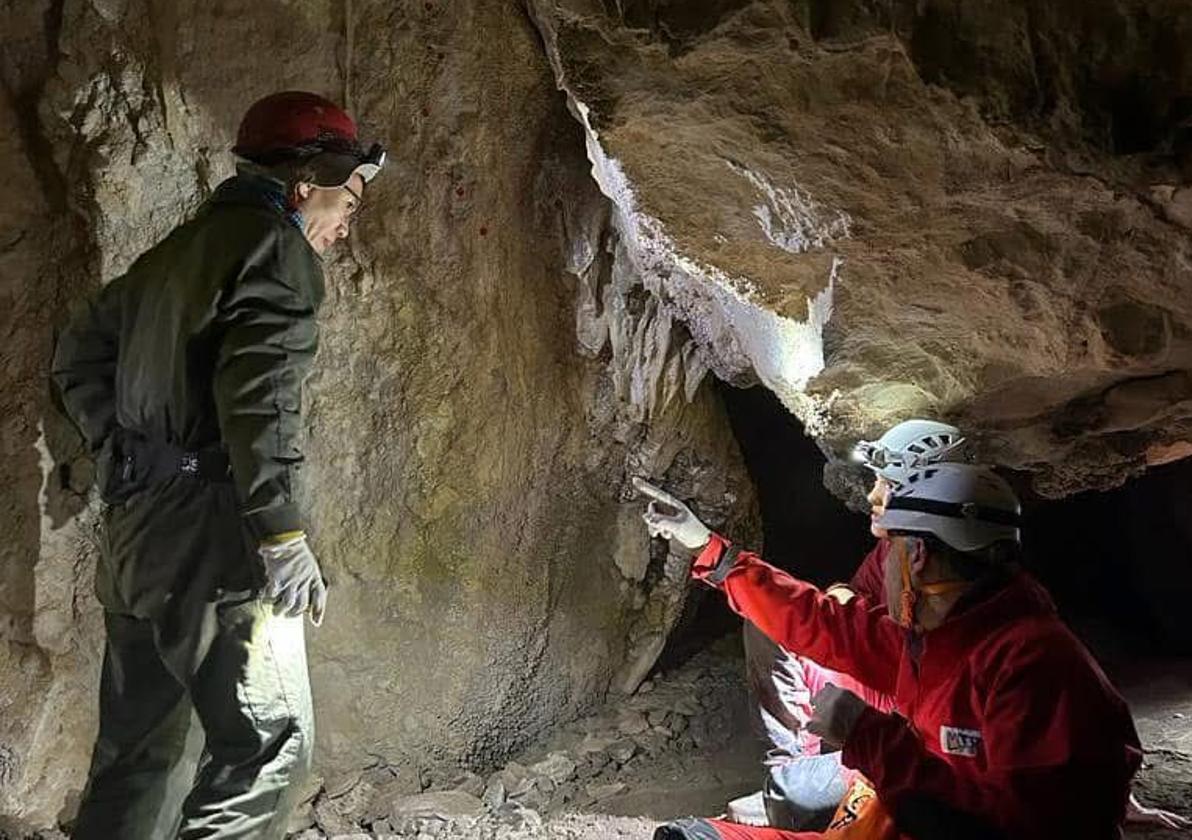Who were the first inhabitants of the Cueva del Toro in Benalmádena?
After decades of neglect, this cave and its paintings are now in the hands of an international research team, which is using the latest technology to try to prove the presence of Neanderthals
Almost everyone in Benalmádena has heard of the Cueva del Toro, but very few people actually know very much about this cave. For decades it has been common for teenagers to make a trip to Mount Calamorro to enter the cave. The entrance was originally open and unmonitored, and more than one person had a real scare in the form of an accident inside a cavity with no facilities or lighting. It’s now fenced off, but people still go in anyway. Beyond that, the Cueva del Toro has remained largely unknown - until now.
Discovered by chance in 1969 by a resident, it was the researchers Manuel Giménez and Javier Fortea who gave some clues to its value in the 1970s with the publication of a study. They documented some of the paintings found in this cave, among them, strokes, dots and the one known as the headless bovid that gives its name to the cave. At that time, these paintings were dated to the Lower Solutrian, that is, some 21,000 years ago. This study was key because it led to its declaration as an asset of cultural interest (BIC), the highest level of heritage protection in this country.
From that moment on, the cave was practically forgotten and has been so for half a century. It was in 2021 when the situation took a turn. At the request of researcher Hugo Mira, who knew the cave, Diego Salvador Fernández, a researcher linked to the University of Cádiz, came to the cave and "from the very first moment I realised the research potential it had”.
This led to an investigation, which began in 2022, directed by Diego Fernández and which is still ongoing. This research is part of an international project to study cave art called 'First Art', which has brought together a dozen high-level international scientists in Benalmádena. This research aims, among many other things, to "apply 21st century science" to the understanding of the cave, according to the director.
"Within the research team are specialists from the polytechnic institute of Portugal and the University of Nanjing (China) who are responsible for collecting samples of calcite for uranium thorium dating," explained Itziar Merino, the municipal archaeologist and director of the Benalmádena exhibition centre. These analyses will hopefully shed light on the exact date when the paintings were made.
DNA analysis is also being carried out in collaboration with the Max Planck institute for evolutionary anthropology in Leipzig (Germany).
"This is a leading institute in its work on Neanderthal mitochondrial DNA, which has not only reconstructed Neanderthal DNA, but also found links between their genome and that of modern humans, earning its principal investigator the Nobel Prize in Medicine in 2022," Merino said.
"These analyses will allow us to know whether the people who made these paintings were Neanderthals, Sapiens, men or women, whether they were blond or dark haired or whether their skin was light or dark," added Fernández.
Last strongholds
And all this comes because the researchers have a hypothesis, based on the fact that the paintings in the cave may be much older than was thought in the 1970s, when technology at the service of art was practically non-existent. "The Cueva del Toro is very close to sites where we have proven Neanderthal art, such as Ardales, and with an artistic repertoire very similar to what we have found here," said the director of the research.
Therefore, if the hypothesis is confirmed, it would be demonstrated that the south of the Iberian Peninsula, and among other caves, the Cueva del Toro in Benalmádena, "is one of the last strongholds of the Neanderthals", the municipal archaeologist said.
Fernández pointed out that the first results they are receiving from the uranium thorium samples they have taken in the cave are already confirming these initial hypotheses, although it will take several more months to obtain more conclusive results.
This research will also make it possible to document one by one all the paintings in the Cueva del Toro, which will thus be recorded for posterity and which will also be published in an informative guide because the third objective of this whole project is to enhance and publicise this heritage.

